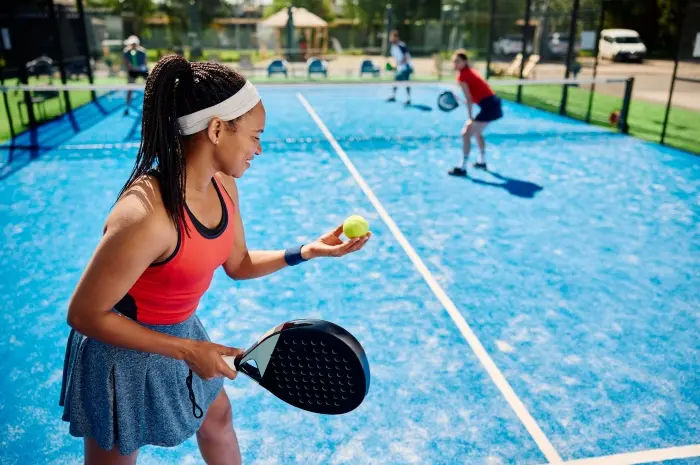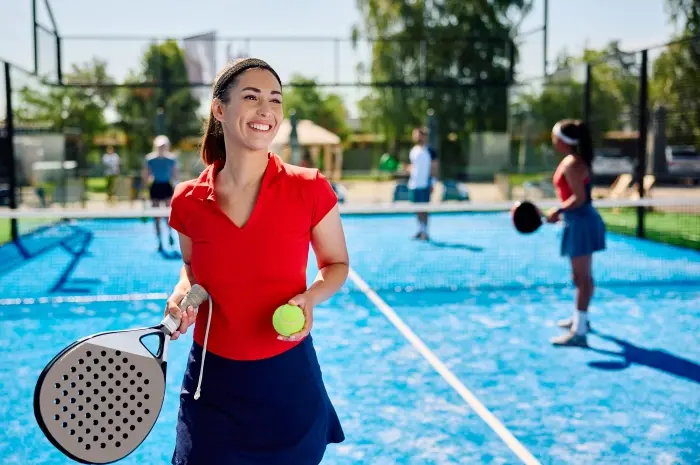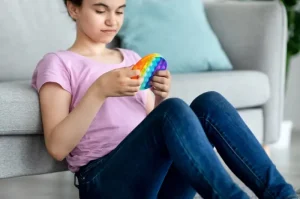Pickleball is a rapidly growing sport that combines elements of tennis, badminton, and table tennis. It is played on a court similar to a badminton court with a lower net, using a paddle and a plastic ball with holes.
Originating in the mid-1960s, pickleball has gained popularity for its accessibility and ease of play, making it a favorite among people of all ages and skill levels.
Whether you’re looking for a fun way to stay active or a new competitive sport, learning how to play pickleball can be a rewarding experience.
Understanding the basics of how to play pickleball is essential for getting started. This guide will provide you with an overview of the game’s rules and some helpful tips to improve your play.
From serving techniques to court positioning, mastering these fundamentals will set you up for success on the pickleball court.
Basic Rules of Pickleball
Court and Equipment
Pickleball is played on a rectangular court that measures 20 feet wide and 44 feet long, similar to a doubles badminton court. The net is set at 36 inches high at the sidelines and 34 inches at the center.
Players use paddles made of wood or composite materials and a perforated plastic ball known as a pickleball.
Serving Rules
- Serving Position: The serve must be made underhand, with the paddle contacting the ball below the waist. The server must keep both feet behind the baseline until after the ball is struck.
- Serve Direction: The serve is made diagonally, starting from the right-hand side of the court and alternating sides after each point.
- Serve Bounce: The ball must bounce once on the opponent’s side before it can be returned. This rule, known as the double bounce rule, applies to the serve and the return of serve.
Scoring
- Points: Points can only be scored by the serving team. Games are typically played to 11 points, and a team must win by at least 2 points.
- Switching Sides: Teams switch sides after each game. In doubles, partners switch sides of the court after scoring a point while serving.
Faults
- Faults During Play: A fault occurs if the ball is hit out of bounds, does not clear the net, is volleyed from the non-volley zone (also known as the kitchen), or is volleyed before it has bounced once on each side.
- Non-Volley Zone: Players cannot volley the ball (hit it in the air without letting it bounce) while standing in the non-volley zone, which extends 7 feet from each side of the net.
Tips for Playing Pickleball

Master the Serve
- Consistent Serves: Practice serving consistently to reduce faults. Focus on accuracy over power, aiming to land the ball deep in the opponent’s court.
- Mix It Up: Vary the speed, spin, and placement of your serves to keep your opponents guessing and off-balance.
Improve Your Footwork
- Stay on Your Toes: Good footwork is crucial in pickleball. Stay light on your feet and be ready to move quickly in any direction.
- Positioning: Position yourself correctly to cover the court effectively. In doubles, communicate with your partner to avoid leaving gaps.
Develop a Solid Return of Serve
- Deep Returns: Aim to return the serve deep into your opponent’s court to push them back and give yourself more time to prepare for the next shot.
- Controlled Shots: Focus on controlled, accurate shots rather than trying to overpower your opponent. Consistency is key.
Use the Kitchen to Your Advantage
- Dinking: Master the art of dinking, which involves hitting soft, controlled shots into the opponent’s non-volley zone. This can disrupt their rhythm and force errors.
- Stay Out of the Kitchen: Be mindful of your positioning near the non-volley zone to avoid faults. Step out of the kitchen after hitting a shot to be ready for volleys.
Communication and Strategy in Doubles
- Communicate: Effective communication with your partner is essential in doubles. Call out shots, switch sides when necessary, and support each other throughout the game.
- Team Strategy: Develop a team strategy that leverages each player’s strengths. For example, one player may be better at net play while the other excels at baseline shots.
Stay Relaxed and Have Fun
- Relax and Focus: Stay relaxed and focused during the game. Tension can lead to mistakes, so take deep breaths and maintain a positive attitude.
- Enjoy the Game: Remember that pickleball is a fun and social sport. Enjoy the game, whether you’re playing competitively or just for fun.
Conclusion
Learning how to play pickleball can open up a world of fun, fitness, and friendly competition.
By understanding the basic rules and incorporating these tips into your practice, you can quickly improve your skills and enjoy the many benefits of this exciting sport.
Whether you’re playing singles or doubles, on a casual or competitive level, pickleball offers something for everyone. So grab a paddle, head to the court, and start enjoying the game today!










